In the dynamic world of construction, worker safety and operational efficiency remain paramount. One significant factor that most construction companies grapple with is adverse weather conditions, rain in particular. Dealing with wet, slippery, and muddy situations creates the need for appropriate rain gear to ensure smooth operations, even during heavy downpours. As we look forward to 2023, the need for rain gear in the construction industry continues to escalate. This article will explore the core benefits of rain gear in the construction industry, delve into the emerging trends that are shaping rain gear production, and project potential challenges and demands to meet in 2023. Stay hooked as we embark on this exciting journey into the future of rain gear needs in the construction industry.
The Essence of Rain Gear in the Construction Industry
In every outdoor profession, weather plays a significant role, and the construction industry is no exception. Rain or shine, construction projects demand timeliness. Unexpected weather can, however, impact productivity, efficiency, and even the safety of employees on the site. As such, the importance of rain gear in the construction industry is an area that deserves thoughtful contemplation. Reliable rain gear isn't just about staying dry; it's about creating an efficient, hazard-free work environment. Let's delve deeper into the crux of the matter:
Protection Against Elements
For construction workers, braving the elements is a part of their everyday routine. When dealing with inclement weather, specifically rainy conditions, possessing proper rain gear becomes crucial.
- Waterproof clothing: These garments offer protection against heavy rainfall and facilitate workers in carrying out their duties unhindered. Items typically include waterproof jackets and trousers.
- Watertight boots: Besides maintaining dry feet, these boots usually have non-slip soles to prevent slipping incidents on wet surfaces.
- Rain hats and hoods: These items give an added layer of protection to the worker’s head, especially when used in conjunction with safety helmets.
In a nutshell, decent rain gear not only acts as a shield against moisture but also serves to protect workers from the cold and wind.
Ensuring Operational Efficiency
Investing in high-quality rain gear is not an expenditure; it's an investment towards enhanced operational efficiency. In optimal weather conditions, workers can function at full capacity. However, when caught unprepared in the rain, tasks can become more strenuous, and efficiency can suffer.
A key aspect of this reasoning is the fact that wet, uncomfortable workers are likely to be less focused, causing a potential drop in productivity. When equipped with appropriate gear, workers can comfortably perform their tasks, ensuring the smooth operation of your construction site regardless of weather conditions.
Promoting Worker Safety
At the end of the day, the welfare of employees is paramount. Besides adding a comfort aspect, the safety angle of rain gear is vital. A construction site can quickly become a hazard zone during rainfall, with slippery ground, obscured vision, and an increased risk of equipment malfunction.
The right gear minimizes these risks, offering workers a solid grip on slippery surfaces, maintaining clear vision, and keeping them warm to avert hypothermia. It's not just about the work; it's about taking care of the people doing the work.
The significance of rain gear in the construction industry isn't just about staying dry and comfortable; it involves optimizing operations and ensuring worker safety. So, next time a downpour strikes unexpectedly, your team can be motivated, focused, and safe, achieving the planned objectives with ease and proficiency.
Emerging Trends in Construction Rain Gear
The evolution of construction rain gear has been an incredible journey. From the ordinary to the innovative, the strides taken in the industry have radically improved the way contractors, architects, repairmen, and laborers work in rainy conditions. Today's rain gear technology has grown markedly compared to a decade ago, making great leaps in areas like material technology, design trends, durability, comfort enhancements, and the use of eco-friendly materials.
Innovation in Material Technology
Remember the days when rain gear was just heavy rubber and plastic that used to feel uncomfortable and suffocating? Fast forward to today, and rain gear has become an embodiment of advanced material technology. The new-age materials are not only waterproof, but they are also breathable, lightweight, and windproof. Some of the innovative materials currently ruling the market include Gore-Tex, Tyvek, and eVent among others. These ensure that workers stay dry without compromising on comfort.
Design Trends
The designs in construction rain gear aren't just about protection against rain anymore. They now factor in safety, utility, and style. Many construction gears now incorporate reflective tapes, detachable hoods, easy-to-access pockets, and zip vents for enhanced functionality. These make the construction site safer by increasing visibility and offering on-the-move flexibility. The color trends have also swerved from the traditional yellows and oranges to a wider palette including neon shades and prints.
Durability and Comfort Enhancements
One of the key considerations while selecting rain gear for construction is durability and comfort. Thanks to modern technology, the present-day construction rain gear is highly durable. The material innovations have led to a lower rate of wear and tear, promising a longer lifespan even in harsh conditions.
Moreover, comfort enhancements like venting options and inner linings improve breathability, allowing workers to stay comfortable during their longer shifts. There are rain gears designed with reinforced knees, adjustable straps, and ergonomic designs that make movement easier and more flexible.
Rise in use of Eco-Friendly Materials
Last but not least, the rise in eco-consciousness has made its way into the construction rain gear industry as well. More and more manufacturers are now turning towards eco-friendly or recycled materials in their gear production. There's an increasing interest in greener materials like recycled nylon and P.E.T. These materials are as durable and functional as their conventional counterparts but with the added advantage of being kind to the environment.
The evolving world of construction rain gear is a part of the industry's constant endeavor towards better work conditions. With the developments in material technology, dedicated design trends, enhancements in comfort and durability, the industry looks forward to a safer and more eco-friendly future.
Future Projections for Rain Gear Needs in 2023
Climate change and evolving technology trends have a significant influence on every product and service in the market. The elements of rain gear are not immune to these effects. In this section, we'll dive deep into the potential dynamics shaping the demand for rain gear in 2023. From anticipating weather patterns, to projected construction projects, and exciting potential innovations in rain gear, we'll do the forecasting for you.
Anticipated Weather Patterns
Our planet's weather patterns have shown a trend of increased unpredictability over recent years. As experts, we predict that 2023 will likely continue in a similar vein. It's expected that:
- Areas known for light rainfall might experience heavier showers.
- Regions recognized for long, dry summers might face uncharacteristic rain.
- Fluctuating weather patterns may lead to extended periods of rain even in typically less rainy seasons.
These new weather norms considerably increase the need for efficient rainproof gear. From umbrellas that resist high-wind conditions to waterproof boots that keep your feet dry, preparedness for unexpected showers is key.
Projected Construction Projects
There's an age-old association between outdoor workers, particularly in construction, and sturdy rain gear. Forecasted construction projects, from skyscrapers to bridges, can directly impact the demand for rain gear. The construction forecast for 2023 is quite bullish, with grand projects in the pipeline like:
- Extensive interstate highway expansions
- Massive skyscraper plans
- Large-scale residential projects
These ambitious constructions planned for 2023 would correlate with an increased need for rain gear. As a result, manufacturers need to ramp up production of durable, high-quality gear that helps outdoor workers stay dry, safe, and productive.
Expected Innovations in Rain Gear
The rain gear industry hasn't been sleeping on the job. Technological innovations are already reshaping the way we perceive 'standard' rain gear, and 2023 will likely bring more surprises. We're expecting to see:
- Lighter, more durable materials
- Eco-friendly designs and materials
- Enhanced water-resistive technology
These advances are projected to redefine the standards for rain protection. Innovations in 2023 could possibly unlock a whole new world of rain gear beyond the conventional. With that, keep an eye out and be ready to experience the future of rain gear.
When we look at the year 2023, it's clear from these projected weather patterns, planned construction projects, and potential rain gear innovations, that the need for quality rain gear will likely increase. The industry must prepare to meet this demand and continue to innovate to bring new rainproof solutions to the table. These predictions justify the need to stay ahead of the curve with adequate and efficient rain gear for whatever the year throws our way.
Meeting the Anticipated Demand
The business ecosystem is a deeply interconnected network of cause and effect relationships, where demand drives supply. Whether you’re a long-standing player in the game or a new entrant, unquestionably, you've faced the excitement and apprehension that comes with heightened product demand. This uptick often poses a question: can you meet the anticipated demand without compromising on quality or breaking the bank? Let's delve into how you can strategize for production increase, foresee potential challenges, and adapt to industry shifts and demands.
Strategizing for Production Increase
When you're on the brink of a dramatic surge in demand, preparation is key. Even if your product is top-tier, failing to deliver on time can significantly impact your company’s reputation, not to mention your bottom line. It's essential to:
- Conduct a thorough capacity analysis: Evaluate your current production capabilities, identify any gaps, and implement suitable measures to bridge them.
- Invest in technology and automation: As we delve deeper into the digital age, it’s increasingly important to leverage technology for both productivity and accuracy. Automation can expedite processes, reduce manual labor, and minimize errors.
- Build a flexible supply chain: A flexible supply chain could be your golden ticket to effectively handling fluctuating demand. This might involve fostering strong relationships with various suppliers or investing in storage facilities.
Potential Challenges
Meeting increased demand isn't just about ramping up your production. It's a balancing act that, without careful handling, can lead to several challenges, like:
- Quality control issues: Rushing production can often lead to an unfortunate decrease in product quality. Regular quality audits can help maintain standards.
- Employee burnout: Pushing the workforce beyond its limits to meet demand can result in burnout, which in turn could affect business continuity.
- Capital constraints: Purchasing additional equipment, hiring more staff, or investing in new facilities can place a significant strain on your resources.
Adapting to Industry Shifts and Demands
No industry is free from change. From technology advancements to changing buyer preferences, there are constant shifts that businesses need to not just adapt to, but anticipate. To do this:
- Stay informed: Regular market analysis will help you stay on top of trends and shifts, giving you a competitive edge.
- Encourage innovation: Fostering a culture of innovation will enable your company to adapt rapidly to changes, ensuring you stay ahead of the curve.
- Understand your customers: Regularly getting feedback from your customers can help you identify their evolving needs, ensuring your services stay relevant.
Meeting the anticipated demand involves a comprehensive approach that both addresses the challenges and exploits the opportunities presented by an increase in demand. It's about effectively planning production increase strategies, foreseeing potential obstacles, and embracing the evolving industry landscape.
Conclusion
As we anticipate the rain gear needs of the construction industry in 2023, it is clear that innovation, durability, and effectiveness will take center stage. Companies like Hurricane Raingear, with their commitment to quality and customer satisfaction, are well-positioned to meet these evolving needs. Rising weather challenges coupled with stringent safety regulations will undoubtedly increase the demand for reliable, comfortable, and durable rain gear. Industry players must, therefore, gear up (pun intended) to meet these challenges head-on.
At the heart of this evolution lies the construction worker, deserving of resilient rain gear that balances comfort and protection seamlessly. As companies like Hurricane Raingear continue to fine-tune their manufacturing process, the future of rain gear in the construction industry appears not only promising but also exciting. The year 2023 might feel far away, but now is the time to prepare. Because, after all, isn't that the essence of a great raincoat—being prepared before the storm hits?
So as we close this reflective journey, we invite you to explore the advancements in rain gear technology, taking a moment to appreciate the thought, research, and relentless efforts companies put into every stitch. Because these stitches are more than just fabric—they are the embodiment of safety, comfort, and a testament to human perseverance under adverse conditions.
Frequently Asked Questions
-
What are the essential rain gear items for construction workers in 2023?
The essential rain gear items for construction workers in 2023 include waterproof jackets, pants, high-visibility raincoats, waterproof work boots, durable gloves, and waterproof hats.
-
What features should I look for in rain gear for construction workers?
When choosing rain gear for construction workers, look for features such as waterproof and breathable materials, reflective strips for visibility, reinforced knee and elbow areas, adjustable cuffs and hoods, and multiple pockets for storage.
-
Are there any specific safety standards for rain gear worn by construction workers?
Yes, the rain gear worn by construction workers should adhere to safety standards such as ANSI/ISEA 107 for high-visibility clothing and ASTM F2413 for protective footwear. Make sure to check for compliance with these standards when purchasing rain gear.
-
How can rain gear improve the safety of construction workers?
Rain gear can improve the safety of construction workers by providing protection against wet and cold weather conditions, enhancing visibility in low light or rainy environments, preventing slips and falls, and reducing the risk of hypothermia or other weather-related illnesses.
-
Where can I purchase high-quality rain gear for construction workers?
You can purchase high-quality rain gear for construction workers from various sources such as specialized workwear stores, online retailers, or directly from manufacturers. Make sure to choose reputable brands and products that meet the required safety standards.



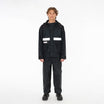



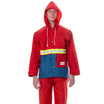


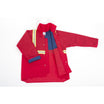

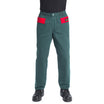



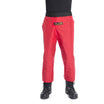




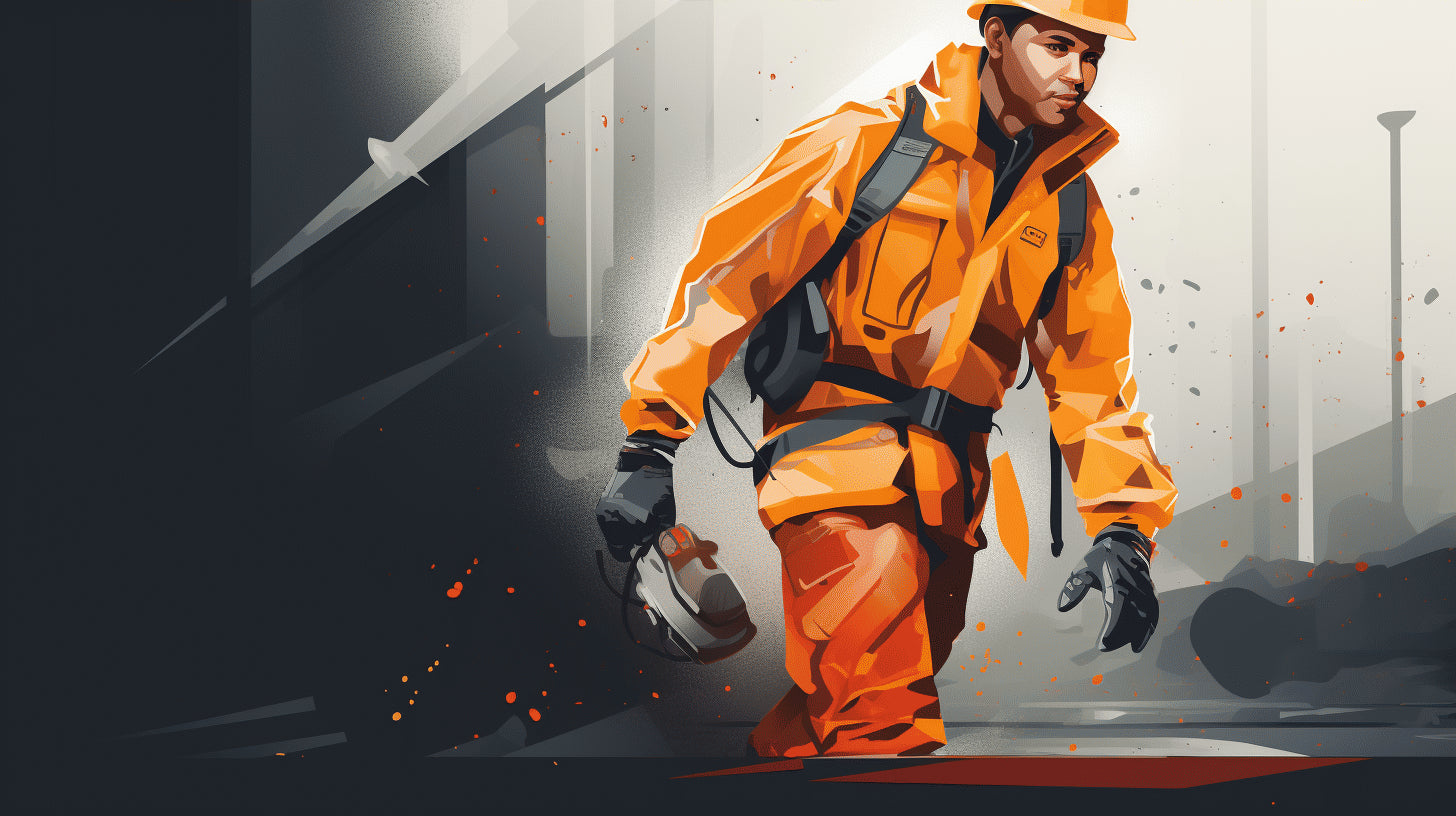

Leave a comment
This site is protected by hCaptcha and the hCaptcha Privacy Policy and Terms of Service apply.